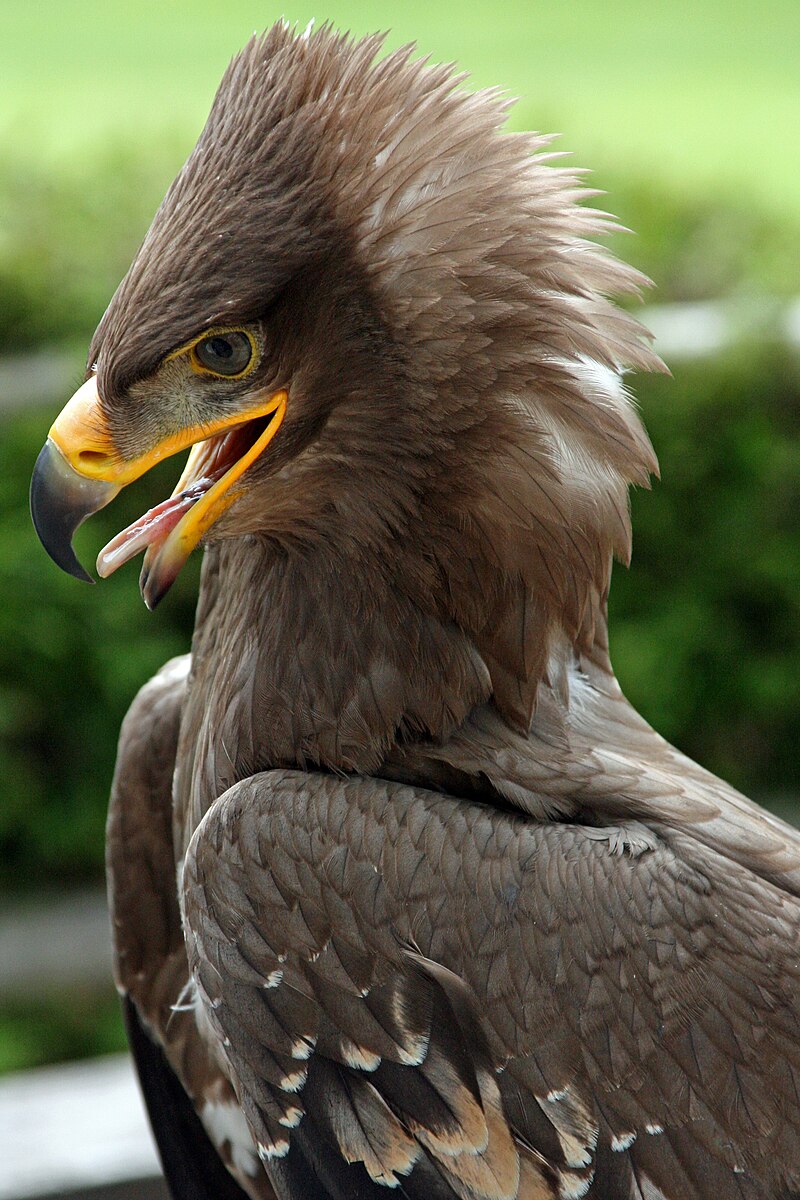The Steppe Eagle’s hallux claw, the enlarged killing talon on the rear foot, measures from 28.3 to 40.5 mm in females and from 31.8 to 36.8 mm in males, averaging 36 mm and 33.8 mm, respectively. This talon size is not especially large for a booted eagle and is proportionately similar in size to those of steppe eagles and eastern imperial eagles.
Steppe Eagle’s Impressive Size
Steppe Eagles are large and impressive raptors, with females ranging up to 15% larger than males. Total length can range from 60 to 89 cm in fully-grown steppe eagles, and wingspan in full-grown eagles of this species is very variable, with the smallest steppe eagles spanning as little as 165 to 174 cm while the largest ones can reportedly span up to 250 cm. Body mass, like wingspan, is also fairly variable, with steppe eagles weighing from 2.5 to 3.5 kg in males and from 3 to 3.9 kg in females.
Talon Size Comparison
 Image source: Steppe Eagle by Fimb
Image source: Steppe Eagle by Fimb
In comparison to other eagles, the Steppe Eagle’s talon size is not as large as some other species. For example, the Golden Eagle’s long, straight and powerful hallux-claw can range from 4.5 to 6.34 cm (1.77 to 2.50 in), which is about one centimetre longer than in a bald eagle and a little more than one centimetre less than a harpy eagle.
Steppe Eagle’s Hunting Prowess
Despite their relatively smaller talons, Steppe Eagles are still formidable hunters. They primarily prey on small to medium-sized mammals, birds, and reptiles. Their sharp talons and powerful grip allow them to capture and kill their prey with ease. Steppe Eagles are known to be skilled at hunting in open grasslands and steppes, where their keen eyesight and agility give them an advantage over their prey.
Habitat and Distribution
Steppe Eagles are found across a vast range, from Eastern Europe to Central Asia. They prefer open, treeless habitats such as grasslands, steppes, and semi-deserts. These areas provide ample opportunities for the eagles to spot and pursue their prey from the air. Steppe Eagles are migratory birds, with some populations undertaking long-distance movements between their breeding and wintering grounds.
Conservation Status
The Steppe Eagle is currently listed as “Vulnerable” on the IUCN Red List of Threatened Species. Their populations have declined in recent decades due to a variety of threats, including habitat loss, persecution, and the use of poisoned baits. Conservation efforts are underway to protect this majestic raptor and ensure its long-term survival.
Conclusion
While the Steppe Eagle’s talons may not be the largest among eagles, they are still a formidable predator. Their impressive size, hunting prowess, and adaptability to a variety of habitats make them a fascinating and important part of the ecosystems they inhabit. By understanding the specifics of their physical characteristics, we can better appreciate the unique adaptations that allow these birds to thrive in their natural environments.

